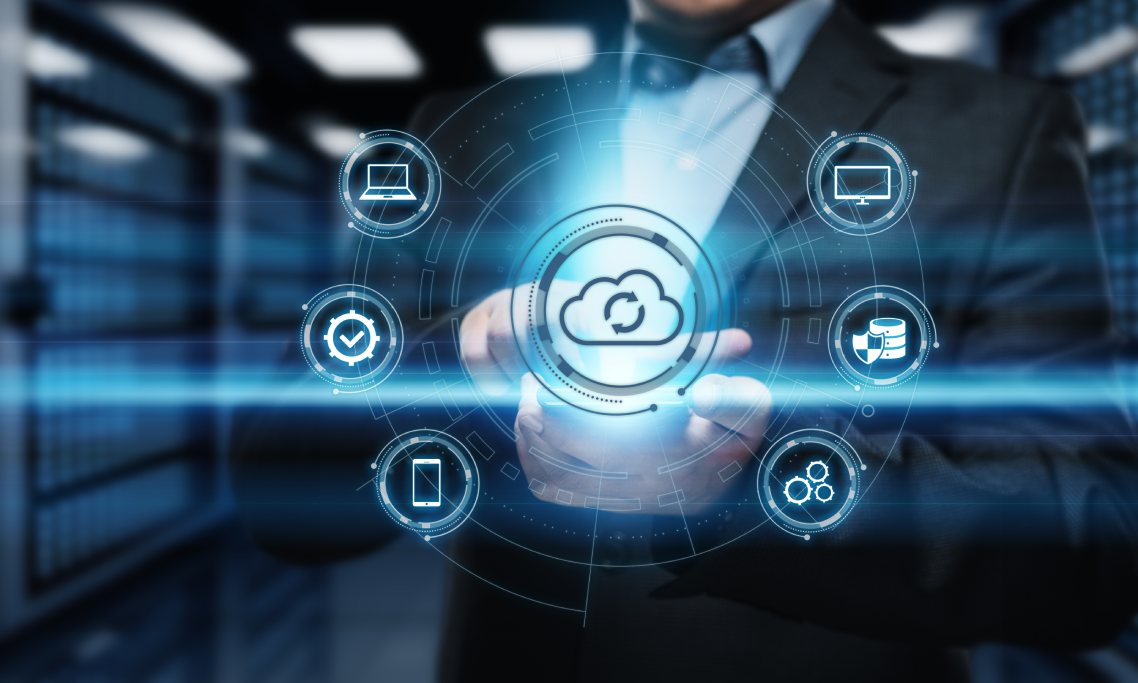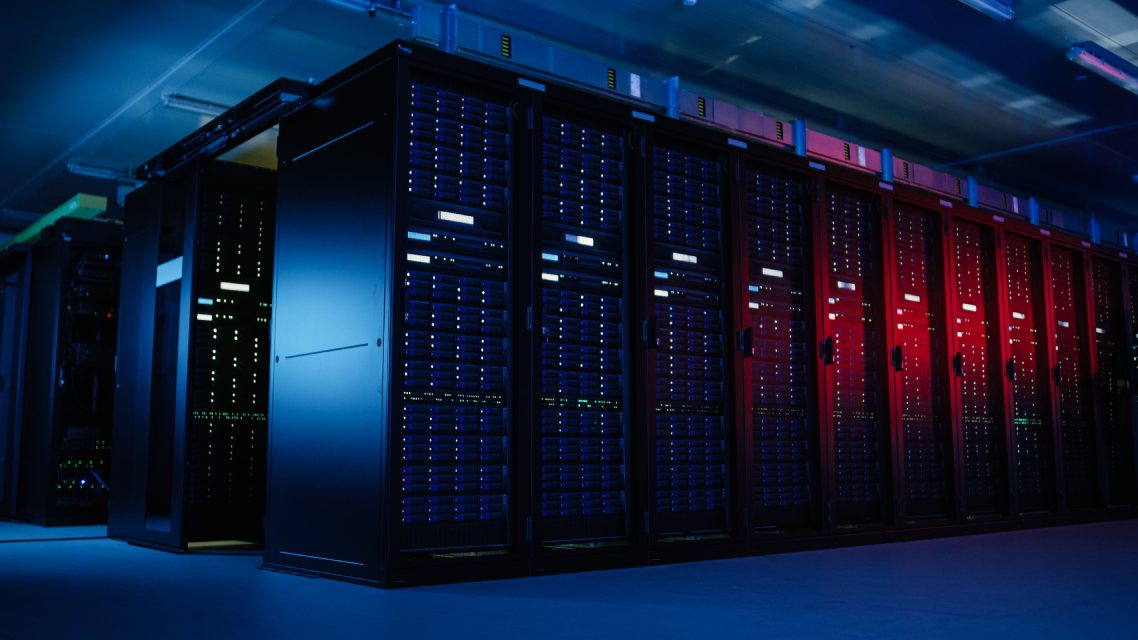
Remote Application Server Software: A Guide
An application server software is a program that hosts applications. Application server software sits between the web server and database server, acting as a go-to solution for users that want to install, operate, and host applications and associated services.
It offers several compelling benefits, including enhanced security to applications, improved fault tolerance, and streamlined management of programs, among others. Find out more about application servers and how Parallels® Remote Application Server (RAS) is key to ensuring the security of dynamic remote working solutions in this article.
Definition of Remote Application Server Software
Remote application server software runs in a datacenter and facilitates the installation, operation, and delivery of applications and desktops to end users in an organization. Organizations can use application servers in various ways, including running web applications, monitoring and distributing software updates, and processing data from another server.
An application server can also host a hypervisor, allowing it to run multiple virtual machines (VMs). Organizations can then deliver virtual applications and desktops—residing within the VMs—to heterogeneous end-user devices without requiring them to install such programs on the actual host machines.
The terms web server and application server are sometimes used interchangeably, even though they carry different meanings. A web server delivers static web content such as hypertext markup language (HTML) pages, files, images, and videos. This is primarily in response to hypertext transfer protocol (HTTP) requests that emanate from a web browser.
Usually, most web servers support plugins for scripting languages such as Active Server Pages (ASP), Jakarta Server Pages (JSP), Hypertext Preprocessor (PHP), and Perl. Web servers use these plugins to generate dynamic content based on server-side logic.
While an application server can also deliver web content, its primary responsibility is to facilitate interaction between clients and the business logic. Through business logic, an application server transforms data into dynamic content such as transaction results, decision support, and real-time analytics to support the functionality of applications.
Application servers also allow applications to leverage services such as clustering, load balancing, reverse proxy, and redundancy—services that enhance the reliability and performance of workloads.
Benefits of Using Application Server Software
Below are three advantages of using application servers:
- Optimize the performance of applications. Unlike web servers that are optimized only to serve web pages and are therefore lightweight, application servers provide the computing power (CPU and RAM) that runs compute-intensive applications. Application servers can also offer a load balancing feature, enabling quick response times and scalability when the number of client requests is high.
- Streamline the management of applications. Without an application server, IT teams have to install new applications or update existing software on the individual host machines. This process is tedious and time-consuming. With an application server software, IT teams can install new applications or update existing software on the server easily, and changes, in turn, take effect on all the other end-user devices automatically.
- Improve the overall security posture of applications. Because of centralized management of applications, application servers provide an integrated view of the entire enterprise’s security map. This allows IT teams to have clear visibility of any cybersecurity breach in an application. IT teams can also install a firewall between the web and application servers to provide an extra security layer.
Models for Application Server Software Deployment
There are four models under which you can deploy an application server software:
1. On-premises deployment
Under this model, the application server software gets deployed in-house and within the organization’s IT infrastructure. The server runs under the supervision of in-house IT teams while data remains under the organization’s control. IT teams also maintain the application server and all its related processes.
2. Public cloud deployment
This is a model where public cloud service providers (CSPs) provide cloud-based services such as software as a service (SaaS), platform as a service (PaaS), or infrastructure as a service (IaaS) to organizations on a pay-as-you-go pricing scheme. An organization can deploy its application server software using these services without hosting the underlying infrastructure in its own datacenters.
3. Hybrid cloud deployment
A hybrid cloud model combines on-premises with public cloud deployment, allowing the application server software and its underlying data to be moved between them as costs and needs change. Using this model enables the organization to derive the same security measures available within its existing, on-premises IT infrastructure while benefiting from agility and flexibility in public clouds.
4. Hyperconverged infrastructure deployment
Deploying an application server on public clouds requires specialized IT skills that may diverge from in-house IT teams, increasing the specialization in an already highly siloed enterprise. Besides, deploying some applications in public clouds may create security challenges that an organization may want to avoid.
Deploying the application server software in a hyper-converged infrastructure (HCI) environment allows the organization to derive the benefits of public clouds while building private clouds or on-premises deployments. You can also extend HCI deployments into public clouds and create hybrid cloud environments, allowing the application server to be managed with the same tools that simplify data migration between the two domains.
Parallels RAS supports all the above-mentioned deployment models. You can install it on-premises or in public clouds such as Azure or Amazon Web Services (AWS). It also supports HCI deployments such as Nutanix Acropolis, Scale Computing HC3, and HPE.
Parallels RAS: Remote Application Server Software
Parallels RAS is a comprehensive application delivery and desktop virtualization solution. Organizations can use Parallels RAS to deliver virtual applications and desktops remotely, allowing employees to access such resources from any endpoint at any time. The platform empowers organizations to centralize their IT infrastructures, which reinforces security.
Companies can also leverage Parallels RAS features such as granular permission policies, multi-factor authentication (MFA), transport layer security (TLS), and Federal Information Processing Standards (FIPS) 140-2 encryption to improve security. Also, Parallels RAS has out-of-the-box high availability load balancing (HALB) that IT teams can use to distribute workloads among remote desktop servers.
Besides security and HALB features, Parallels RAS also provides numerous compelling benefits such as:
- A superior user experience (UX). Employees can access enterprise resources from any device wherever they are. They can access and use Windows applications natively from any operating system (OS) with platform-specific Parallels Clients for Windows, Linux, macOS, Android, Chromebook, and even HTML5 client-less web access.
- Enhanced IT agility. Parallels RAS has a flexible and scalable architecture that companies can use to address their demands in real-time, quickly adapting to continuous workplace requirements. With Parallels RAS, IT teams can scale the organization’s IT infrastructure easily and manage multi-cloud deployments centrally. They can also mix and match different technologies such as hypervisors, HCI solutions, and Windows Server OSs.
- Streamlined IT management. IT teams can use the Parallels RAS unified and intuitive console to simplify the provisioning and configuration of IT infrastructure in an organization. They can also leverage customizable tools and configuration wizards to publish and manage virtual applications and desktops effortlessly.
- Reduced IT costs. As a comprehensive desktop virtualization solution, Parallels RAS saves resources, lowers overall overhead expenses, and minimizes hardware footprint. Organizations can access all the product’s comprehensive features with a single licensing model.
Parallels RAS: Use Cases
As an application delivery solution, Parallels RAS supports operations in virtually any sector, including healthcare, education, manufacturing, banking and finance, retail, and government, among others. Below are some use cases for Parallels RAS involving manufacturing, banking and finance, and education.
Manufacturing
Manufacturing companies can leverage Parallels RAS to:
- Improve productivity. Parallels RAS fosters productivity by providing real-time access to applications and data at every stage in the production process, from any endpoint and location—including facilities and manufacturing sites.
- Streamline IT administration. Parallels RAS is easy to deploy. Regardless of the location or device, employees have simplified access to applications and data.
- Simplify multi-cloud deployments. Parallels RAS can help manufacturing companies increase flexibility through scaling of their IT infrastructures to multiple clouds on an on-demand basis.
- Run legacy software. With Parallels RAS, manufacturing companies can publish enterprise resource planning (ERP) solutions, allowing their employees to access them from heterogeneous devices at any location.
Finance and banking
The financial services sector can use Parallels RAS in various ways, including:
- Providing data protection. Banks and other financial services organizations can mitigate data security risks with Parallels RAS because it centralizes IT management, ensuring that data never leaves the datacenter. Parallels RAS also supports robust security protocols such as MFA, smart card authentication, and FIPS 140-2 that offer advanced security.
- Fostering business continuity. Financial institutions can use the Parallels RAS HALB feature to deliver fast, consistent, and reliable access to published applications and desktops at any time. This ensures that employees and customers have access to resources even during peak times.
- Supporting bring-your-own-device (BYOD) options. Parallels RAS eliminates the complexity of delivering corporate resources to disparate platforms. It empowers financial institutions to allow employees to use their preferred devices at the workplace and access sensitive applications and data.
- Facilitating kiosk-mode deployments. With Parallels RAS, IT teams can convert any Windows-based workstation into a pseudo-thin-client, increasing control over employees’ activities. IT teams can also repurpose old PCs such as those running Windows 7 or Windows XP into fully functioning thin clients.
Education
Educational institutions can also benefit from Parallels RAS through:
- Enhanced security features. Educational institutions can minimize the risk of data breaches to their IT infrastructures by leveraging robust features such as MFA, advanced filtering, and customized policies. Students and teachers can access the school’s resources securely from any device and location with Parallels RAS.
- Streamlined multi-campus environments. IT teams can simplify multi-campus IT infrastructures by leveraging the easy-to-use and unified console. This reduces the costs and time required to deliver resources to multiple campuses.
- Continuous learning. Educational institutions can minimize risks associated with downtime and interruptions by leveraging cutting-edge HALB. Students and teachers can have faster and more consistent access to their resources with Parallels RAS—regardless of where they connect.
- Virtual desktop automation. IT teams can easily create virtual desktops on the go by leveraging virtual desktop infrastructure (VDI) templates, PowerShell application programming interfaces (APIs), and streamlined testing. They can also use linked clones to manage large user groups.
Parallels RAS: An All-in-One Application Server Software Solution
Rapid digitalization in many industries has intensified the demand for IT infrastructure, propelling the growth of the application server software market. Parallels RAS is a leading contender in the application server market because it is an all-in-one solution. Organizations can use it to deliver applications and desktops via remote PC, remote desktop services (RDS), and VDI.
As such, Parallels RAS provides a robust infrastructure for remote working by allowing employees to access corporate resources securely and seamlessly from any device. It also guarantees that employees never experience any downtime with its HALB.
Explore an all-in-one application server software solution!

